Pre-convention workshops / $50
Always popular, our pre-convention workshops dive into specific, timely topics.
This year’s workshops, presented digitally on the convention platform, are scheduled from 3-5 p.m. ET Thursday, Oct. 22. Advance registration required, and the registration rate is $50.
You can add registration through the modify link in your confirmation email.
A pandemic reset:
Restructuring student media business models
Sarah Scarborough, University of South Carolina;
Erica Beshears Perel, University of North Carolina-Chapel Hill;
Elizabeth Smith, Pepperdine University;
and Jeff Bunch, Eastern Washington University
If budget cuts, grief from administration and loss of advertisers weren’t already bad enough, the global pandemic cemented 2020 as a year where keeping student-run publications viable is truly a struggle. Despite all of this, some smart and savvy student media groups are turning the tide in the battle of funding. Hear from their directors and advisers who are restructuring and innovating their funding models to keep their operations afloat.
Sarah Scarborough is director of student media at the University of South Carolina, a position she has had since 2014.
Scarborough leads a team of three professional staff members, and they support The Daily Gamecock news organization, Garnet and Black magazine, SGTV, and WUSC FM/HD1. These four student organizations operate under the umbrella brand Garnet Media Group and are editorially independent.
Before this role, she was the advertising director for 14 years. She joined the university in 2000 after six years at the State newspaper, Columbia, South Carolina, as an account executive.
Erica Beshears Perel is the general manager of The Daily Tar Heel, the nonprofit student newsroom at UNC-Chapel Hill.
In her time as general manager, the newspaper has diversified its revenue sources to include fundraising, grants, digital advertising, marketing/creative services and print advertising. Before becoming general manager, Erica was newsroom adviser to the DTH newsroom, following a 10-year career as a reporter.
Jeff Bunch is director of The Easterner, the independent student-run news organization of Eastern Washington University. He is responsible for all business functions of the media group and was formerly adviser of record. He teaches in EWU’s journalism program.
He has a background in multimedia and multi-platform journalism. In more recent years, Jeff has been employed in higher-education marketing in Spokane, Washington.
Elizabeth Smith is the director of Pepperdine Graphic Media and an assistant professor of Journalism at Pepperdine University.
She is a board member of Associated Collegiate Press, the research chair of College Media Association and the president of the California College Media Association.
She has 14 years of experience teaching a variety of journalism and media courses at Pepperdine as well as advising and directing the Graphic newspaper (print and digital), Currents Magazine, GNews (web show), and PGM Advertising.
She has nearly 20 years of professional experience in the journalism industry, including print, web and broadcast news.
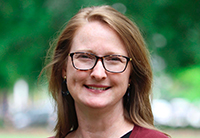
Sarah Scarborough

Erica Beshears Perel

Jeff Bunch
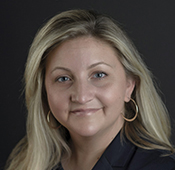
Elizabeth Smith
Covering protests and staying safe so you can tell the story
Allison Bennett Dyche, moderator, and students from The Commonwealth Times, Virginia Commonwealth University —
Andrew Ringle, executive editor;
Hannah Eason, managing editor;
Eduardo Acevedo, news editor; and
Iman Mekonen, spectrum editor —
and Diana Mitsu Klos, Student Press Law Center
You’ll need to know how to plan carefully before heading out to cover a protest on your campus or in the community, and know what to do if you are accosted.
Hear and learn from students who have been on the protest frontlines and have been confronted by law enforcement while credentialed. We’ll review journalists’ legal rights, steps to take in advance to protect yourself and what to do if challenged by police or protestors.
Allison Bennett Dyche is director of student media at Virginia Commonwealth University, Richmond, Virginia. She previously served as assistant director for student media at Appalachian State University, Boone, North Carolina, and will soon be returning to Appalachian State as news adviser to The Appalachian news organization.
Dyche is a Ph.D. candidate in the interdisciplinary media, art and text program at VCU, where she is researching audio storytelling and podcasting. She has a bachelor of science in journalism from Georgia Southern University and a master of arts in documentary photography from SCAD.
Andrew Ringle is a VCU senior majoring in mass communications and minoring in political science. He’s worked at The CT for more than two years, and is now the paper’s executive editor. Working in the field during protests in Richmond and leading The CT’s newsroom, Ringle is also currently a reporter for Capital News Service covering the Virginia General Assembly.
Hannah Eason has been with The CT since her sophomore year, previously serving as news editor. Her journalistic work has won her a variety of awards, including the Virginia Press Association award for education writing portfolio, and the national Society of Professional Journalists Robert D.G. Lewis First Amendment Award in 2020. Eason is a senior majoring in broadcast journalism with a minor in political science, and is a member of mass communications honors society Kappa Tau Alpha. She also works as a digital content producer for Richmond NBC affiliate WWBT.
Eduardo Acevedo is a third-year mass communications major, with a concentration in digital journalism at VCU. He has written for the Commonwealth Times since his sophomore year and has gained experience covering Richmond and university stories, protests and pandemic stories as they affect Richmond and VCU. He fell in love with journalism after interviewing classmates for his high school yearbook class and telling their stories in print at the end of the year.
Iman Mekonen is the Spectrum Editor at The CT, where she reports on the arts and culture scene in Richmond. As a third year student at VCU, she is pursuing a degree in international social justice studies with a minor in political science. She is also a member of the National Association of Black Journalists and enjoys covering race and pop culture. After college, she aspires to work in public service, incorporating writing and media to international contexts.

Allison Bennett Dyche

Andrew Ringle

Hannah Eason

Eduardo Acevedo

Iman Mekonen
Taking care:
Protecting your staff and yourself from emotional trauma during turbulent times
Kenna Griffin, CMA president, media training specialist at the University of Southern Indiana, and remote editorial adviser for Washington Square News at New York University;
Ngozi Akinro, assistant professor of mass communications and student media adviser at Texas Wesleyan University; and
Joe Hight, chair of journalism ethics at the University of Central Oklahoma
Journalists are exposed to trauma as a result of their work at a rate more than double that of the general population’s exposure in their lifetimes. This means that exposure to death or near death experiences—things like COVID-19, protests, sexual assault, suicide and car wrecks—is an unavoidable part of journalism. Some journalists suffer from emotional trauma as a result of this exposure. In this precon, you’ll learn about trauma, the levels of emotional trauma suffering, how to identify trauma symptoms in yourself, best practices in reporting about traumatic events and how to take care of yourself and your staff throughout this type of coverage.
Kenna Griffin @profkrg is CMA president, a remote media training specialist for The Shield student media at the University of Southern Indiana, the remote editorial adviser for Washington Square News at New York University and an adjunct professor in the Gaylord College of Journalism and Mass Communication at the University of Oklahoma.
She has been a full-time professor and college media adviser for nearly two decades, following a career as a professional journalist. Griffin is the author of profkrg.com, a site that serves as a practical resource for student journalists.
She has a Ph.D. in journalism from the University of Oklahoma. She researches the relationship between emotional trauma, journalism professionalism and organizational support.
Ngozi Akinro is an assistant professor of mass communication at Texas Wesleyan University. She is also a faculty adviser for Rambler Media Group, Wesleyan’s student run media organization.
Akinro teaches Mass Media and Society, Broadcast journalism, Crisis management, Mass Media War and Terrorism, Mobile and Digital production. Her research interests are in the area of conflict management, trauma, terrorism and crisis coverage, human rights, gender and race relations. She has published articles, book chapters and book reviews in professional and peer reviewed journals and books.
Joe Hight is the Edith Kinney Gaylord Endowed Chair of Journalism Ethics in the Department of Mass Communication at the University of Central Oklahoma. He also is director of the Oklahoma Journalism Hall of Fame.
Hight is a columnist, writer, consultant and a bookstore owner. His newspaper career as an editor, director, managing editor or reporter spanned nearly 40 years. He was the editor of The Gazette in Colorado Springs when the paper won a Pulitzer Prize. He also is known as one of the co-founders of the Dart Center for Journalism and Trauma.

Kenna Griffin

Ngozi Akinro

Joe Hight
Digital design that connects with your users
Amy Devault, Wichita State University, and Anna Boone, Star Tribune, Minneapolis
The world is visual, social and mobile, and your publication should be, too.
Learn how to effectively use social media, photos, video, data, analytics and digital tools to tell stories and enhance reader engagement. In this pre-convention workshop, we’ll show you ways to enhance your visual storytelling and online presence with these components:
• Package planning and design
• Interactive graphics
• Video & photos
• Social media
• Creative thinking
Amy DeVault is a faculty member in the Elliott School of Communication, Wichita State University (Kansas) and the faculty adviser to The Sunflower newspaper. She is also project manager for the new Wichita Journalism Collaborative, and she serves as a board member of Associated Collegiate Press.
She teaches classes in journalism and visual communication, and she is co-founder and instructor of the popular Flint Hills Media Project — an immersive, multimedia storytelling project class. DeVault began advising The Sunflower in 2016, but she has taught at state and national student media workshops for nearly 20 years.
Before joining the faculty at Wichita State in 2007, DeVault worked at The Wichita Eagle as a news designer. She earned an Award of Excellence from the Society for News Design for her work on the paper’s coverage of the serial killer BTK.
Anna Boone is a digital designer at the Star Tribune in Minneapolis. In her role, she works on enterprise projects, daily graphics, and anything in-between. She is happiest when she is deep in the weeds at work, working with reporters, photographers and videographers to tell a story in the best way possible.
Before the Star Tribune, she attended Indiana University and interned at the Denver Post in Colorado and Verge magazine in London. Her work has won awards from the Society for News Design, the Society of Professional Journalists, and an Emmy (Upper Midwest Regional Division to be precise, but the statuette looks the same).

Amy DeVault
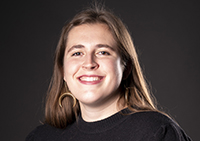
Anna Boone
Safe spaces:
Micro-aggressions in our content and workspaces
Tamara Zellars Buck, Southeast Missouri State University
The goal of this session is to introduce the concept of microaggressions to student journalists and further their understanding by engaging them in activities around spotting microaggressions within the office culture and in their content creation.
Tamara Zellars Buck is a professor of multimedia journalism, adviser to The Arrow and Association of Black Journalists:SEMO and the chair of mass media at Southeast Missouri State University where she has been an instructor since 2001.
She is also vice president of membership support for College Media Association and a member of the National Association of Black Journalists, the Society of Professional Journalists and the Southeast Missouri Press Association. Her goal as a professor is, “to produce innovative media professionals who are ethically grounded and have a full understanding of the power and influence they wield as the creators of the first draft of history.”
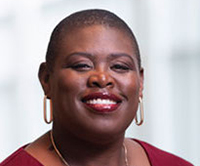
Tamara Zellars Buck
Email Newsletters 101 (and 202, 303, 404 …)
David Simpson, director of student media at Georgia Southern University;
Gary Metzker, lecturer of journalism at Cal State Long Beach and design adviser to its student newspaper and magazine;
Heidi Perez-Moreno, former editor-in-chief of the Reporter, Miami Dade College (Florida); and
Jonas Malave, technology consultant and former advertising manager of The Alestle, Southern Illinois University Edwardsville.
Want to instantly reach more readers than your current print product? Start an email newsletter. It’s not as hard as you think to set up.
Get the basic info and some thoughts on setting up your newsroom and deadlines to feed a newsletter that will be a must-read. The result at one campus with a weekly press run is 5,500 and the newsletter that gets opened by 6,000 readers five days a week.
If you’re already producing an email newsletter, bring your success stories and growing pains to share.
David Simpson fell in love with journalism while working at his college newspaper. He went on to spend 31 years as a professional reporter and editor, including managerial jobs at The Associated Press and The Atlanta Journal-Constitution.
He has been director of student media at Georgia Southern University since 2014.
Gary Metzker has been a full-time lecturer at Cal State Long Beach since 2008 and serves as design adviser for the Daily 49er and DIG Magazine.
Metzker has worked at newspapers in Delaware, Missouri, Florida and California. For almost 25 years, he worked at the Los Angeles Times as sports news editor, metro news editor, A1 editor and senior editor. During that time, Metzker was a part of four Pulitzer Prize-winning staff awards for breaking news and spot news. Metzker has also been awarded seven Los Angeles Press Club awards and two Medals of Excellence from the Society for News Design.
Heidi Perez-Moreno is a junior studying journalism at the University of North Carolina at Chapel Hill. She recently wrapped up a year-long tenure as editor-in-chief of Miami Dade College student newspaper, The Reporter, in August.
During the coronavirus pandemic, Perez-Moreno spearheaded the design and creation of the paper’s biweekly newsletter as a way to keep MDC’s community informed after the paper was forced to stop printing.
Jonas Malave is a technology consultant and former advertising manager of The Alestle, Southern Illinois University Edwardsville.
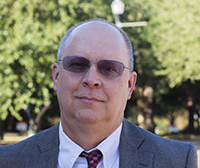
David Simpson
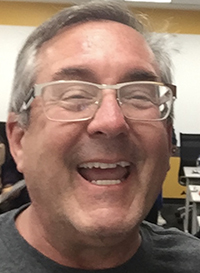
Gary Metzker

Heidi Perez-Moreno

Jonas Malave
Fast and furious: The print-design shortcourse
Randy Stano, University of Miami (Florida), and Ron Johnson, Associated Collegiate Press
This long-running pre-convention workshop is chock full of fresh ideas, and in two fast hours, we’ll discuss both fundamentals and trends in print design for collegiate media. Teaching the workshop are Randy Stano, Ibis yearbook and Distraction magazine adviser at the University of Miami (Florida) and past president of the Society for News Design, and Ron Johnson, former collegiate adviser and the six-time editor of SND’s Best of Newspaper Design.
We’ll tackle the fundamentals of print presentations — story forms, strong visuals, tasteful typography and smart packaging. Then we’ll move into the trends in news design, with dozens of ideas for photos, graphics and stories from publications around the world.
Our time is condensed, but have PDFs of your publication handy if we have time for quick critiques.
Randy Stano is a professor of practice in journalism and media management at the University of Miami and adviser to the Ibis yearbook and Distraction Magazine.
He is the former director of editorial art and design for The Miami Herald, a Lifetime Achievement Award winner from the Society for News Design and a former SND president. Stano worked with Pulitzer Prize-winning staffs at the Kansas City Times/Star and The Miami Herald.
His student-publications life goes back to high school advising for award-winning yearbooks and newsmagazines, and he is a former National High School Journalism Teacher of the Year.
Ron Johnson is communications director for Associated Collegiate Press and National Scholastic Press Association. He has three decades of experience of advising collegiate media at Indiana, Kansas State and Fort Hays State universities, and his former students now work in journalism and mass media, graphic design, law and medicine. Johnson was the six-time editor of The Best of Newspaper Design competition annual of the Society for News Design. He is past president of College Media Association, the Western Association of University Publications Managers and Kansas Collegiate Media.
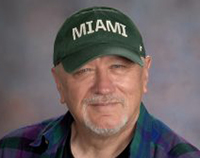
Randy Stano
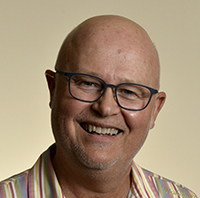
Ron Johnson
